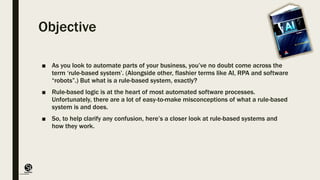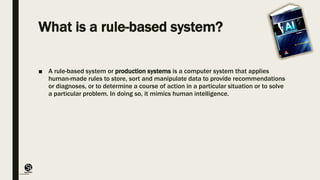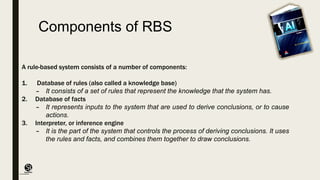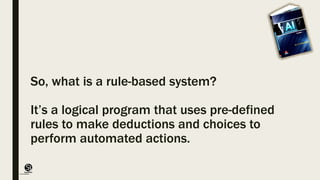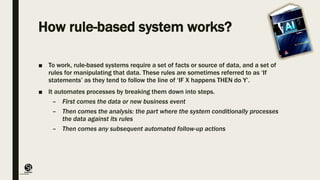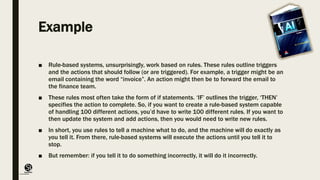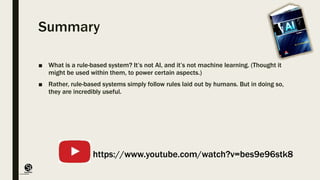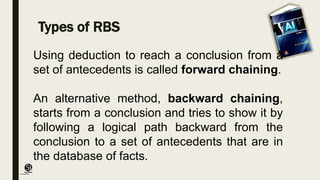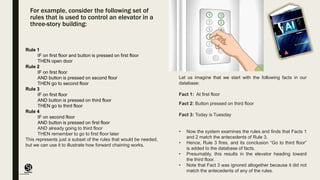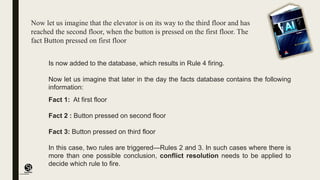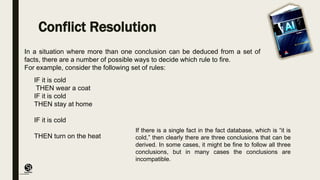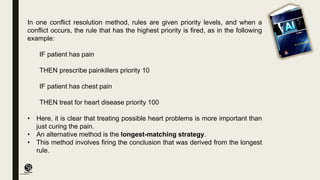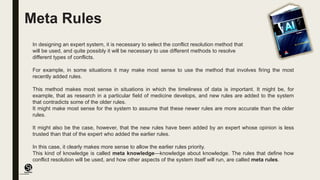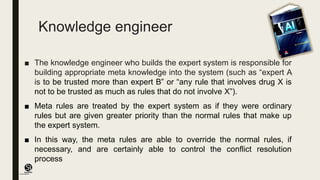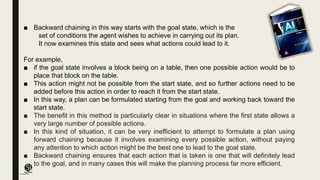A rule-based system uses predefined rules to make logical deductions and choices to perform automated actions. It consists of a database of rules representing knowledge, a database of facts as inputs, and an inference engine that controls the process of deriving conclusions by applying rules to facts. A rule-based system mimics human decision making by applying rules in an "if-then" format to incoming data to perform actions, but unlike AI it does not learn or adapt on its own.

